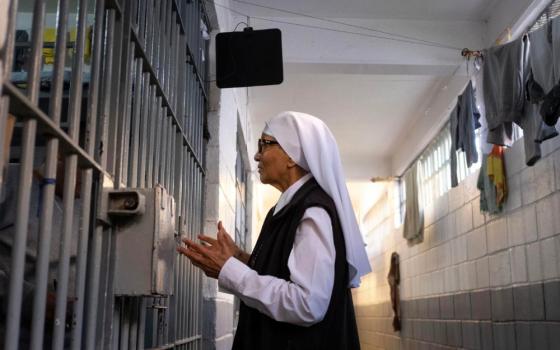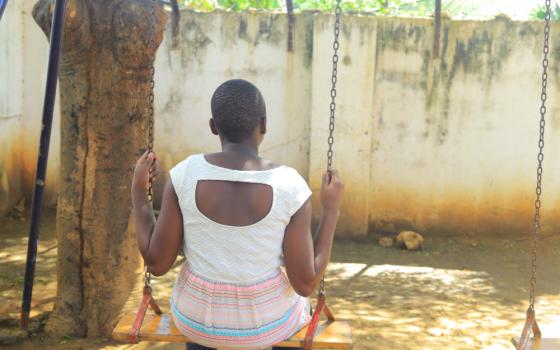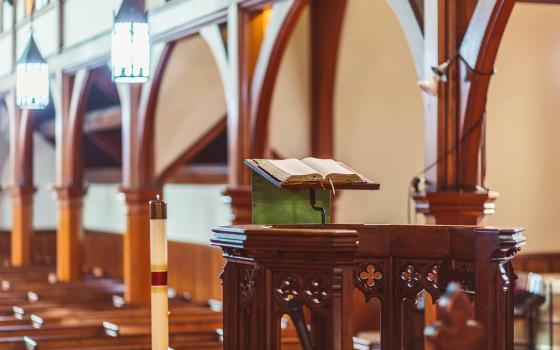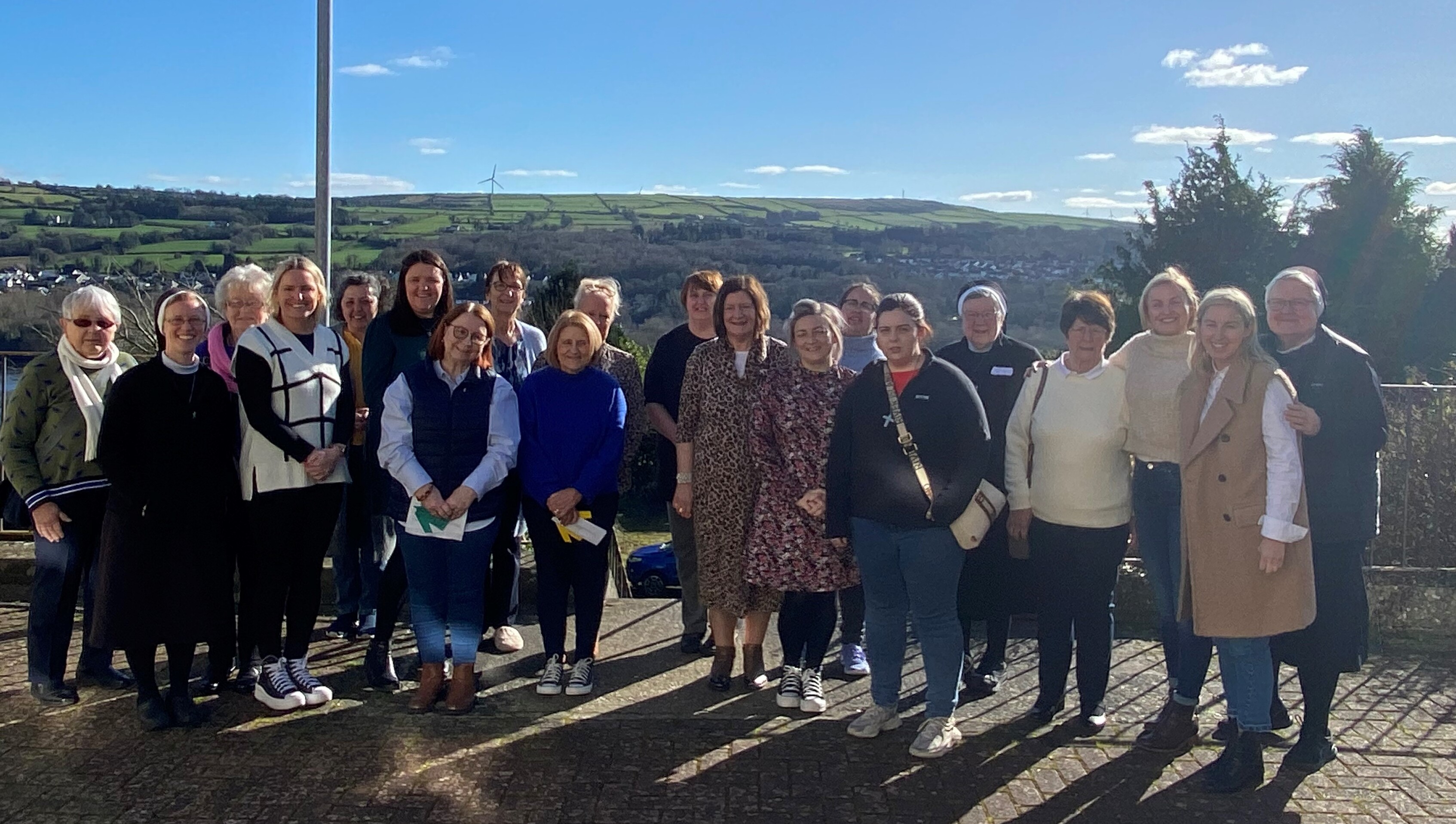
The author and sisters led the Termonbacca Carmelite Ladies' Lenten Retreat in Derry, Northern Ireland, in February. (Courtesy of Kathryn Press)
"When did you last restart your computer?" This sage advice corrects a multiplicity of technical maladies. My own experience tells me that a Lenten reboot is equally helpful. "Lent 2.0." A second chance … or third or fourth or fifth. Somehow, I always lament at how short Advent is, but immediately complain the moment Lent seems to start to drag on.
My first weekend of Lent this year was lovely. My sisters and I led a women's retreat in Derry, Northern Ireland. The readings drew us in and the silence surrounded us. Even the sun made an appearance. My Lenten forecast looked good.
Yet we were only a week into the purple and penance when I was ready to throw in the towel. Interiorly, I was in desolation. During the sacrament of confession, the priest gently encouraged me: "It’s never too late to restart your Lent. Nothing could make Jesus happier!" Indeed, nothing could be more in keeping with the spirit of Lent than to convert — to turn around — our lives to the Lord once again.
While I was wishing away my Lent a few weeks ago, now it seems as if we've fast forwarded to the end and I'm staring Palm Sunday in the face. For some, Holy Week might seem to drag on and on. For others, it can be over in a flash. Regardless of how the timing impacts you, I encourage you to say a prayer at this threshold as we enter into these sacred days.
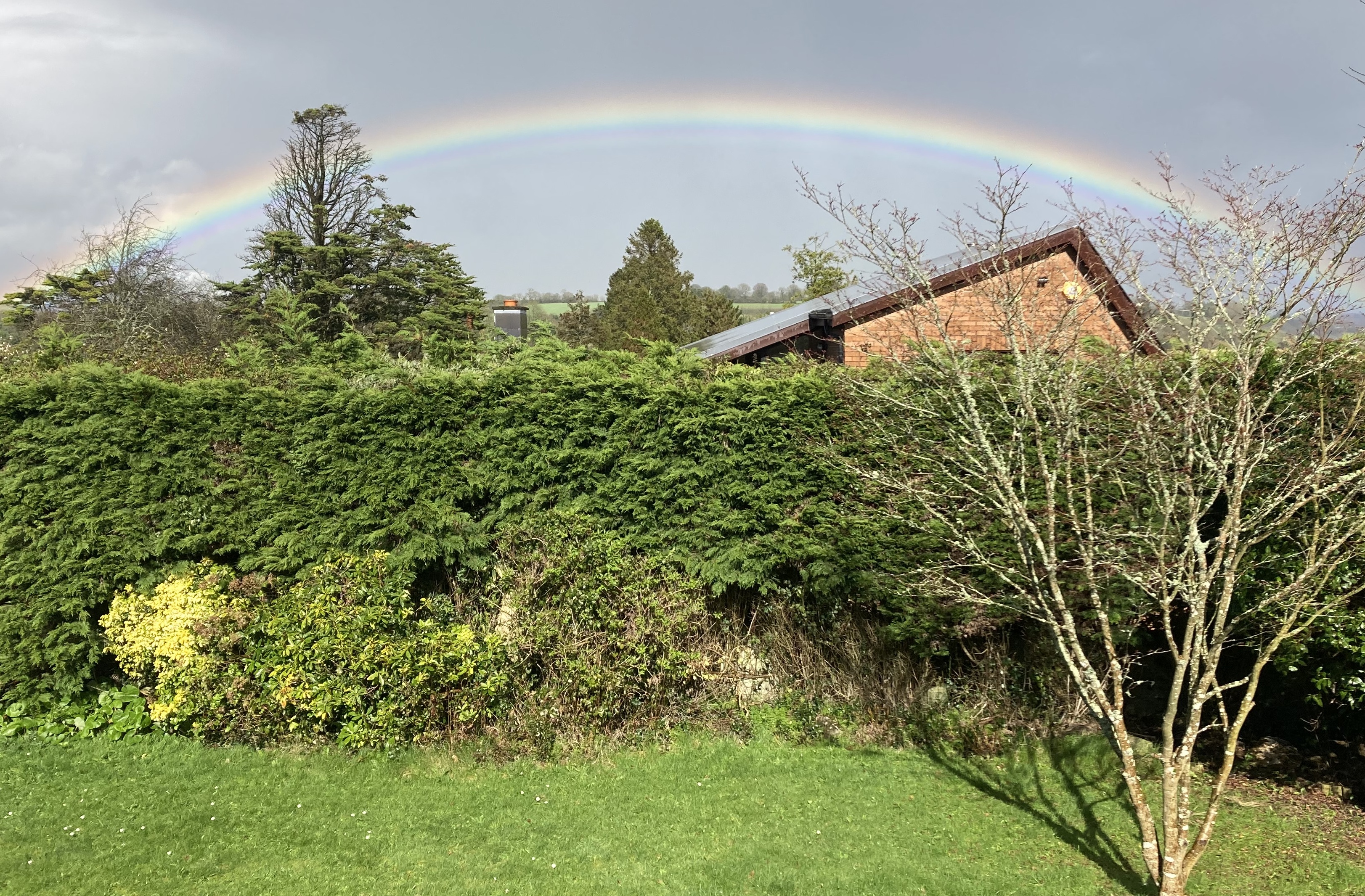
A rainbow over the River Suir in Waterford, Ireland, in February (Kathryn Press)
The best Lenten tools I have from my Catholic upbringing are prayer, fasting and almsgiving. I'm not the only one who uses these lenses to reflect on my Lent. Sr. Colleen Gibson focused especially on prayer recently, and Sr. Rosemary Wanyoike used these three tools as a Lenten examination of conscience.
During the retreat talk I gave at the start of Lent, I used examples from the lives of the saints to help make my talk more realistic. Here are some examples (some in the earlier stages of that journey to sainthood) in the hope that we might derive inspiration from their example to aid in our praying, fasting and giving.
Prayer: "Father, into your hands I commend my spirit" (Luke 23:46).
St. Dominic Savio wanted to live for God alone with his whole person. At the age of 7 he made four resolutions that would help him grow closer to God — not an empty, static declaration, but something he truly wanted to live. He continued to grow in holiness and devotion, especially to Our Blessed Mother, throughout his life before dying at 14.
Another Italian child, Venerable Antonietta (Nennolina) Meo wrote of her love for Jesus and desire to receive him in the Eucharist. Although her body was riddled with pain due to bone cancer, she exuded great joy. Even after her leg was amputated, she writes to Jesus how she was happy to offer this as a sacrifice for him.
These are two young people, of which there are countless others, who commended their entire selves to our Heavenly Father.
How is my day-to-day conversation with God? What sources of nourishment feed me? Where is the sacred or holy in my life? Perhaps I can turn to Scripture. Read the daily Mass readings. Listen to Pray As You Go. Try visio divina. Find a new church to visit on Good Friday for Stations of the Cross.
Fasting: "Not my will but yours be done" (Luke 22:42).
Mostly paralyzed, and highly sensitive to light, Venerable Marthe Robin spent 50 years living on a sofa bed in a dark room in her childhood home in France. During this time, she subsisted entirely on the Eucharist and slept very little. Beyond the obvious physical sufferings and her mystical union with Christ, Marthe was also known for the joy with which she received visitors. Even when friends came to visit her only once a year, Marthe would pick up the conversation exactly where they left off. It’s estimated that more than 100,000 received her counsel her before she died in 1981.
Matt Talbot is often proposed as the patron saint of alcoholics. Raised in a family with a history of alcoholism, Matt developed his own drinking habit as a teenager. A manual laborer his whole life, he began a life of recovery at age 28. An honest worker, Matt's faith gave him meaning and encouragement. He attended 5 a.m. Mass daily and was known for his life of strict prayer and penance, citing early Christian monks as his inspiration. While his regimen may seem severe to our modern mentality, he found going without created a space in his life for God and others.
I ask myself: What addictions have taken root in my life? When have things not gone as I had planned, but according to God's plan instead? How can I think of myself less and God more? Perhaps I might skip the podcasts this week. Delay watching my favorite episode until after Easter. Forego the extra shot of vanilla syrup in my coffee. Opt to walk instead of drive.
Advertisement
Almsgiving: "Blood and water flowed from His side" (John 19:34).
Both her father and stepmother modeled the spiritual and corporal works of mercy to St. Katharine Drexel and her sisters. Katharine gave of her time and money to serve the needs of others, particularly in founding schools on reservations in the American west. After founding the Sisters of the Blessed Sacrament, her family fortune enabled her to open more than 60 schools, including Xavier University in New Orleans, Louisiana. Bedridden from a stroke, she spent nearly two decades at the end of her life in adoration and prayer. She considered this the greatest contribution she could offer her sisters.
Many people observed the innate business acumen of Blessed Edmund Ignatius Rice. Family business and natural abilities provided opportunities for growth in both farming and commercial trade. Naturally, the bishop turned to Edmund when he required land for a convent for the newly founded Presentation Sisters in Waterford City, Ireland. Edmund leased the land for the sisters and eventually became their bookkeeper and business manager. Inspired by the sisters' witness, Edmund took the wealth he amassed and turned his attention to the needs of poor, uneducated Catholic boys eventually founding two communities of religious brothers.
Turning inward: When have I felt most generous? When did I fail to give to someone in their time of need? How did the Lord give my strength beyond what I thought was possible? It might be possible to listen with greater compassion to the complaining co-worker. Write a letter that requires a stamp. Intentionally smile at three people today.
Knowing it's never too late for a reboot, I'm reminded of words we have already walked past. May they provide a focus and a direction for the remainder of our time on this Lenten walk.
O God, author of every mercy and of all goodness,
who in fasting, prayer and almsgiving
have shown us a remedy for sin,
look graciously on this confession of our lowliness,
that we, who are bowed down by our conscience,
may always be lifted up by your mercy.
Through our Lord Jesus Christ, your Son,
who lives and reigns with you in the unity of the Holy Spirit,
God, for ever and ever. Amen.
Collect, Third Sunday of Lent


